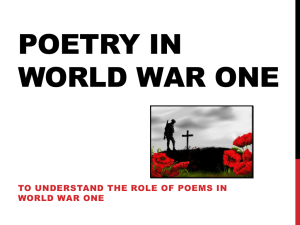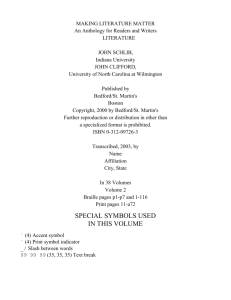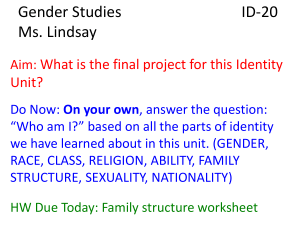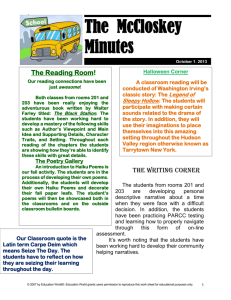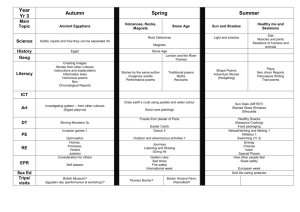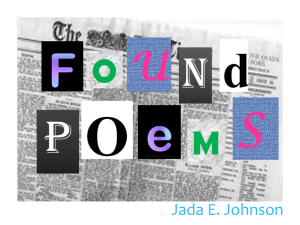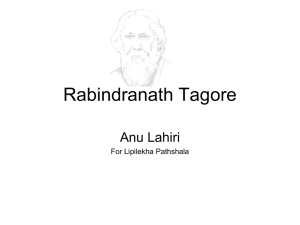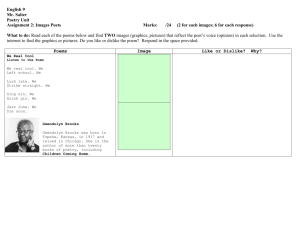Trench Poetry
advertisement
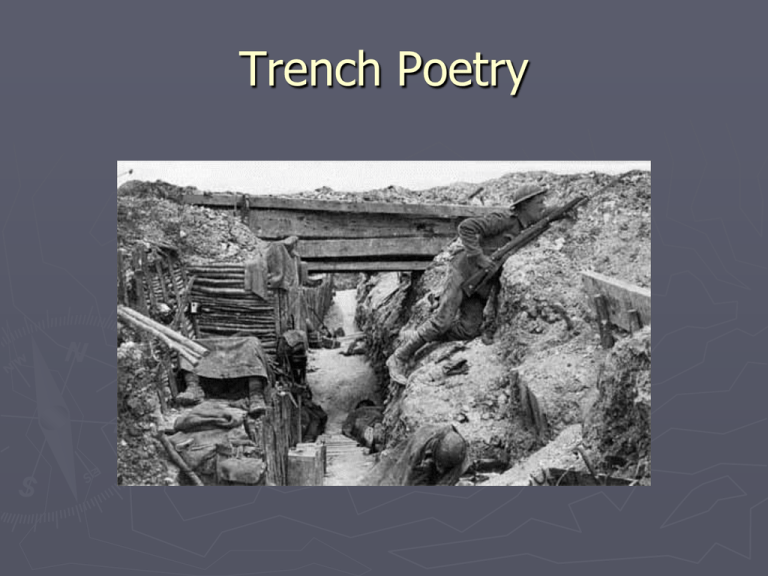
Trench Poetry World War I ► The ultimate shock of modernity ► “the ultimate rite of passage: a definitive coming to manhood for the industrial age, in which boys became men by confronting mechanical horror and discovering their essential masculinity, perhaps even their essential humanity, in a realm from which feminine presence is banished” (Campbell 204). Rupert Brooke ► The Dead ► The Soldier War discourse ► Patriotism/nationalism ► Honor ► Nobility of spirit ► Selflessness ► Glory ► Holiness Work in groups of four Share the poems you have chosen and explain why you chose this particular poem. Discuss the following questions (in as much as they are applicable to your poems) and write your answers on a piece of paper: ► ► ► ► Where is the poet? Who is he? What defines him? What are the most striking images in the poems? Why? How is nature portrayed? How is the Home Front (civilian life) portrayed? What might the purpose of the poem be? How does it compare with Rupert Brooke’s poems? Choose one poem to present to the class. You’ll need to explain why you chose it. The poems Characteristics ► ► ► ► ► ► ► ► ► ► ► ► ► trench setting (dominant icon of WWI) formally conservative, realistic text portrays heretofore unknown gruesome details rather that “beauty is truth” (Keats), “horror is truth” participant’s point of view, emphasis on personal experience details of the physical and psychological effects presented as an unmediated truth soldier as passive sufferer some use of Crucifixion/Christ imagery inversion of pastoral imagery (nature) accusation of those at home (especially women) separation between those who have experienced this war and those who have not Purpose of shocking those at home and educating them ► Sasoon’s declaration against the war ‘Shell-Shock’ (post-traumatic stress) “The extent of war neurosis among combatants in the 1st WW is a direct result of a tension between the offensive personality which the Western European military commands attempted to instill in their troops and the defensive personality required to survive the reality of trench warfare. The dominance of long-ranged artillery, the machine gun and barbed wire had immobilized combat, and immediately necessitated a passive stance of the soldier before the forces of mechanized slaughter […] When all signs of physical fear were judged as weaknesses and where alternatives to combat – pacifism, conscientious objection, desertion, even suicide – were viewed as unmanly, men were silenced and immobilized and forced, like women, to express their conflicts through the body” (Showalter, 171). Ultimately ► “Reality had changed in fundamental ways that called into question the assumptions on which art, and civilization itself, had been based” (Hynes 11). ► Take a look at a really great website Works Cited ► Campbell, James. “Combat Gnosticism: The Ideology of First World War Poetry Criticism.” New Literary History 30.1 (1999): 203-215. ► Hynes, Samuel. A War Imagined: The First World War and English Culture. London: The Bodley Head, 1990. ► Showalter, Elaine. The Female Malady. Women, Madness, and English Culture, 1830-1980. New York & London: Penguin, 1985.
